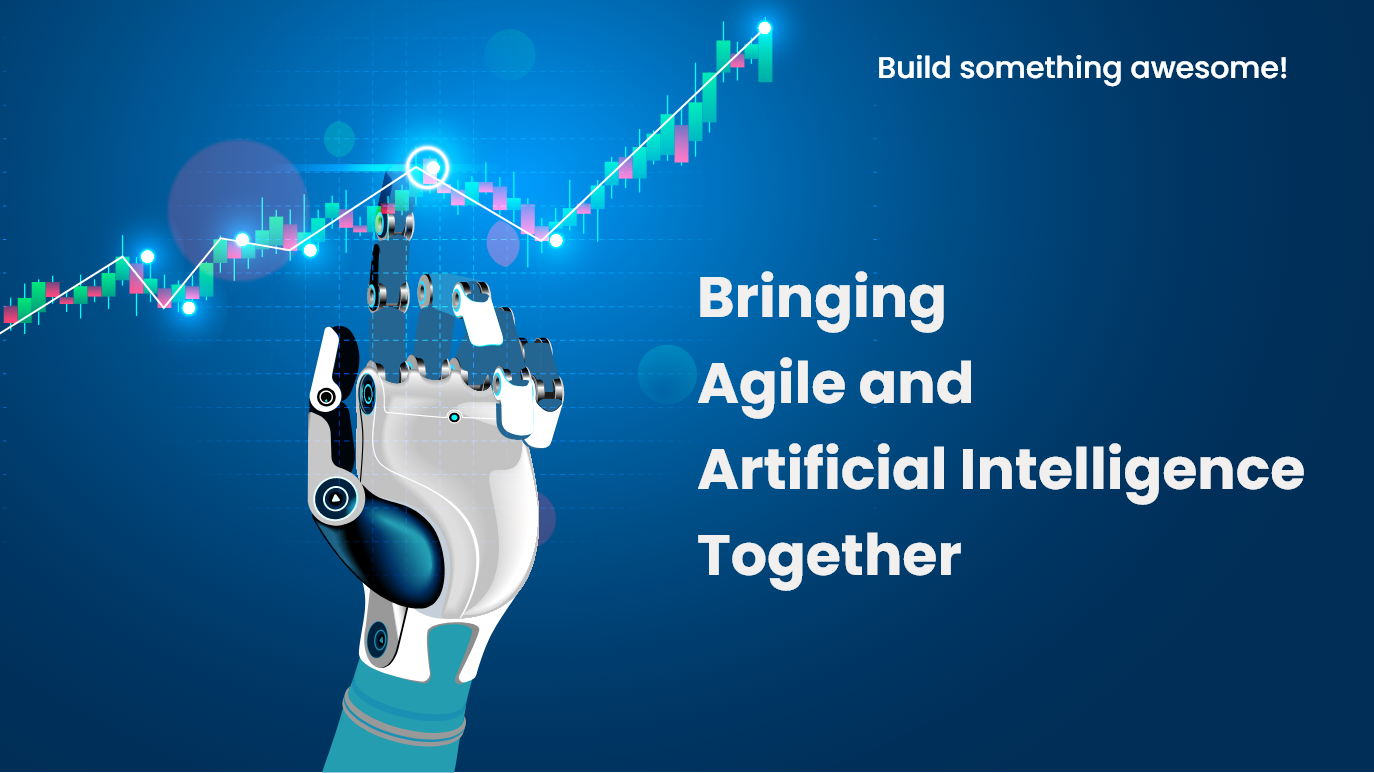Bringing Agile and Artificial Intelligence Together

Artificial Intelligence (AI) has an array of use cases and application areas. With or without our knowledge, AI has already made its place in our lives. From the monotonous to the magnificent, Artificial Intelligence is creeping into almost every business process across all industries today. In this blog, we will be discussing Agile Artificial Intelligence.
Enterprises have finally begun to wake up and smell the coffee. 48% of CIOs in the 2022 Gartner CIO and Technology Executive Survey responded that they have already deployed or plan to deploy AI and machine learning technologies within the next 12 months.
With such stiff competition in any market, there is an urgent need among businesses to devise strategies on the fly, while still having the room to plan for contingencies. There is a large bandwidth for innovation by harnessing the technology of today. This means businesses have the room to dissect and understand the factors that aid in or hamper productivity.
AI has the potential to present numerous advantages to businesses as we've never seen before. And, agile development, and management methodologies have already been indispensable components for businesses. Let's understand more about Agile Artificial Intelligence in detail.
What is Agile for AI?
In order to figure out exactly how to reach the maximum potential of a business, a set of principles need to be employed that are aimed at deriving maximum benefits from all organizational procedures. Depending on the nature of a business' processes, Agile methodologies can be adopted if conditions permit.
To scale the rate of AI development and implementation in enterprises, the iterative processes as prescribed under the Agile manifesto can be implemented. Although there are some teething issues when it comes to the implementation of Agile to deliver value through AI, there are benefits that are worth taking the time to adapt these methods. Let's take a look at what you get when you bring Agile and Artificial Intelligence together.
The Benefits of Agile and AI
- Improved quality - It is not enough to put out the initial version of any software without constantly developing and improving its functionality for later versions. Agile talks about how development is an iterative process, and how it is necessary to refine your products constantly.
- Flexibility - Agile principles have a wide range of uses and applications. Depending on the function of AI in your enterprise, Agile AI practices can be formulated as per those requirements.
- Fixed timeframe - Agile Artificial Intelligence allows you to work within smaller time frames, known as sprints. The primary focus of Agile is customer satisfaction. Efficient work directly correlates to improved customer satisfaction, as delivery and feedback can be met with greater consistency.
- Better monitoring - Agile AI allows organizations to collect, organize and compute enormous amounts of data. Upon analysis, this can be used to pinpoint problems and design solutions, recommend courses of action, and in some scenarios, also initiate responses.
Challenges Faced when Integrating Agile into AI
Although there are clearly a number of valuable benefits that come with employing Agile methodology in AI development, there are certain factors that make Agile unsuitable as a set of practices to follow. Here are some of them:
- Implementation in siloed organizations - Unfamiliarity with the iterative development process can create stress within enterprises that are yet to adapt their processes to meet market demands.
- Large teams - Agile principles are hard to follow when development teams are large and spread out geographically.
- Uncertainty of results - Not knowing what the goals are beforehand can create challenges when it comes to estimating costs and resources, especially in Agile intelligence.
- Limited functionality - Agile AI can only be used for a specific set of processes and tasks. When it comes to creativity and imagination, AI still cannot compete with the human brain. It is also not realistic to assume that AI can skill up through repeating a set of processes, as humans do.
Business Value in AI
According to a report by IBM, over 85% of advanced adopters are reducing operating costs with AI Executives reporting operating cost savings from AI across numerous areas. 47% have recorded cost improvement in process efficiency, 41% in supply chain and production, and 39% in headcount efficiency improvements. This clearly shows that the value of Agile in Artificial Intelligence has immense potential. The adoption of AI has been shown to boost revenue, lower costs, which positively impacts the profitability of a business. Investing in AI has been proven to accelerate time to value. The scope of Agile AI is such that it can bring in unprecedented value across almost all industries.
Making Room for Agile in Artificial Intelligence
Since the principles of Agile were formulated in the nineties, they need to be built on to be relevant in modern-day applications. It is important to be clear on the context of Agile application. Most teams are better off just using Agile as a guide and framework upon which they can formulate their own methods to work efficiently. The reality is that much of Agile clashes with AI development. Knowing where to be by the book and when to improvise is crucial when attempting to make Agile and Artificial Intelligence go hand in hand.
The Relationship Between AI and Agile with other Practices
The efficacy of AI is beginning to translate into other practices. DevOps teams generally face the challenge of having to adhere to a strict timeline. The integration of AI allows them to accelerate the pace of carrying out their tasks. In terms of productivity, AI has shown incredible potential, along with generating the highest increments in the level of accuracy.
AI has also been particularly effective in detecting bugs and making changes to code. It is proving to be indispensable when troubleshooting and problem-solving in complex software platforms even after their deployment.
Conclusion
To sum up, it is clear that bringing Agile and Artificial Intelligence together in the development processes has benefits on one hand and a set of complications on the other. However, by using Agile as a guide, it is possible to develop an effective strategy and heighten productivity in AI development and functionality.
Accelerating processes and bringing down human error by automating repetitive work is where AI shines. Combining the concepts of Agile has the potential to make AI more functional, effective and beneficial to enterprises in particular, and daily life as we know it as a whole.
Thanks for subscribing to our latest blogs, thought leadership and other product updates!
Read our Privacy Notice to know more. You can opt-out of all communications anytime.
